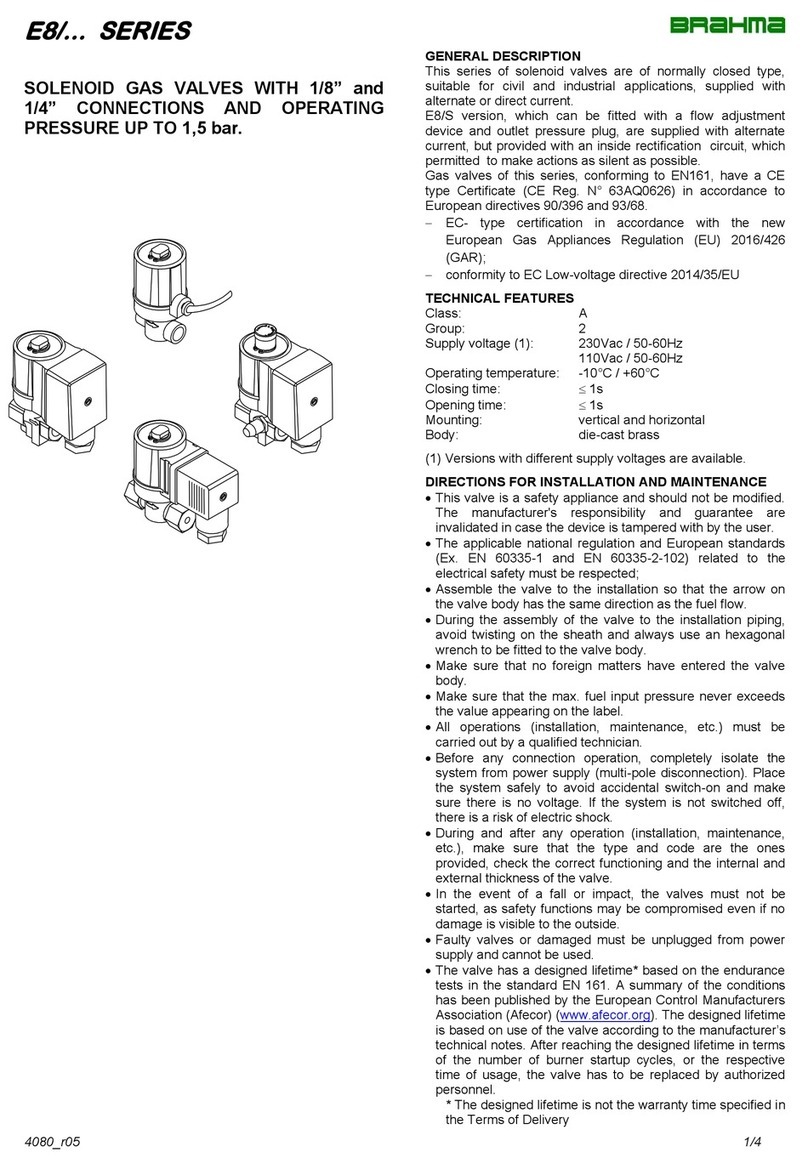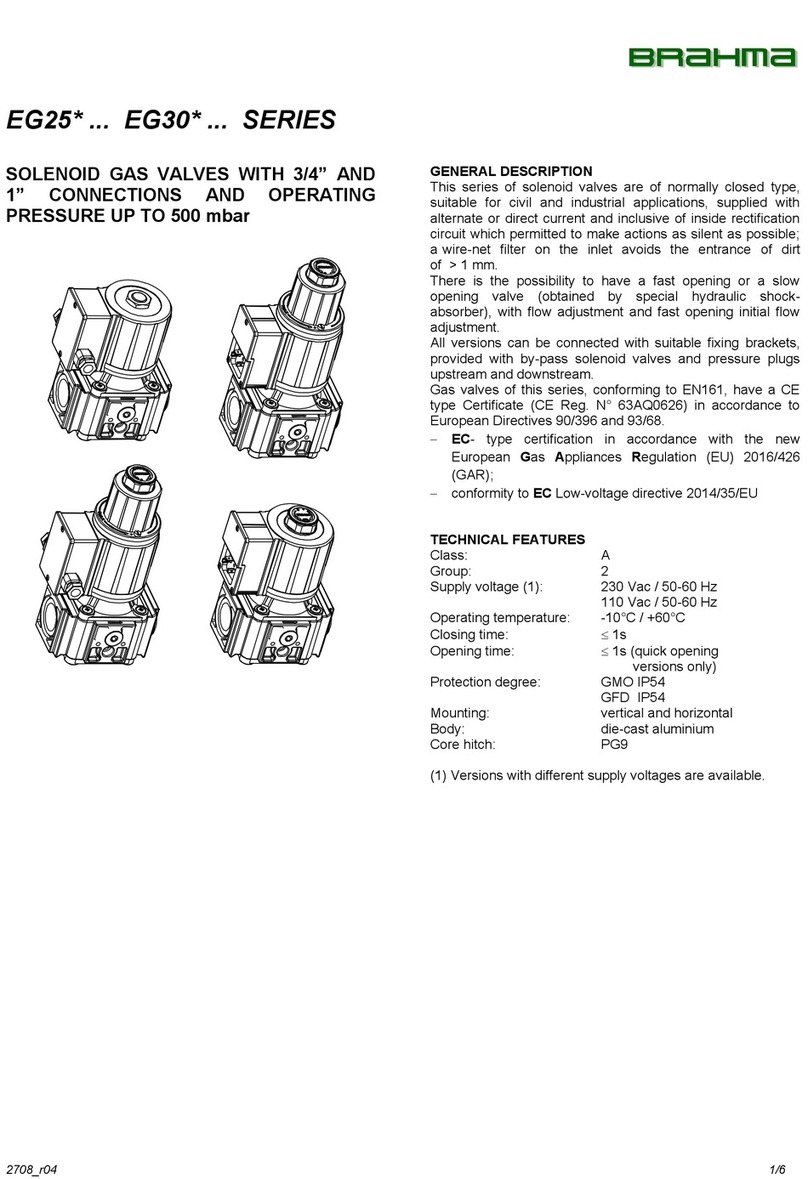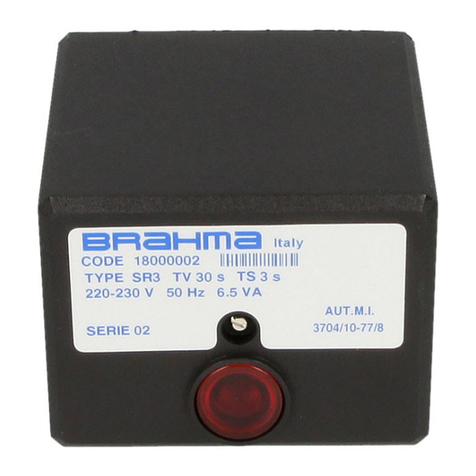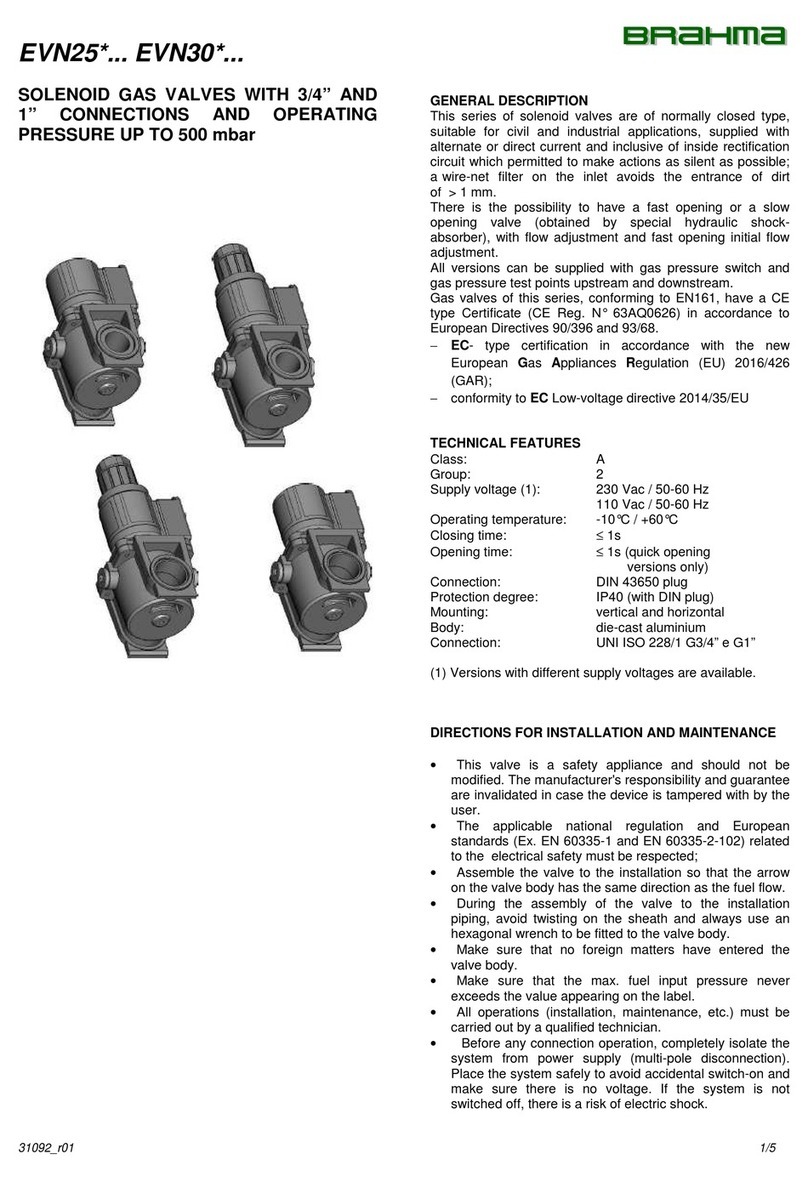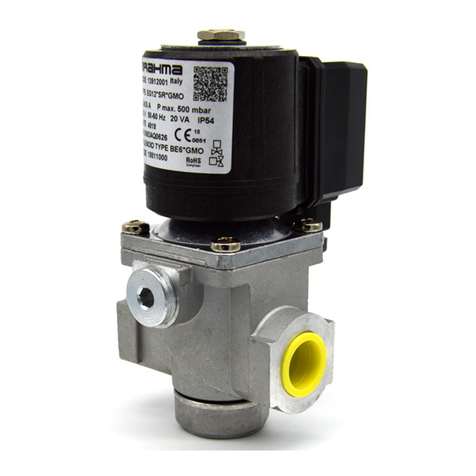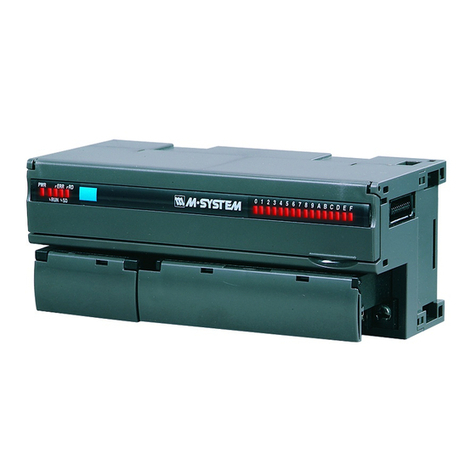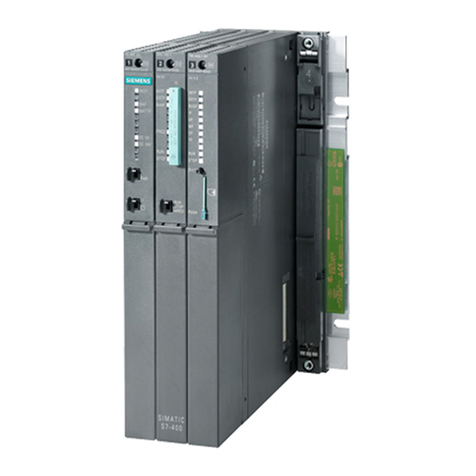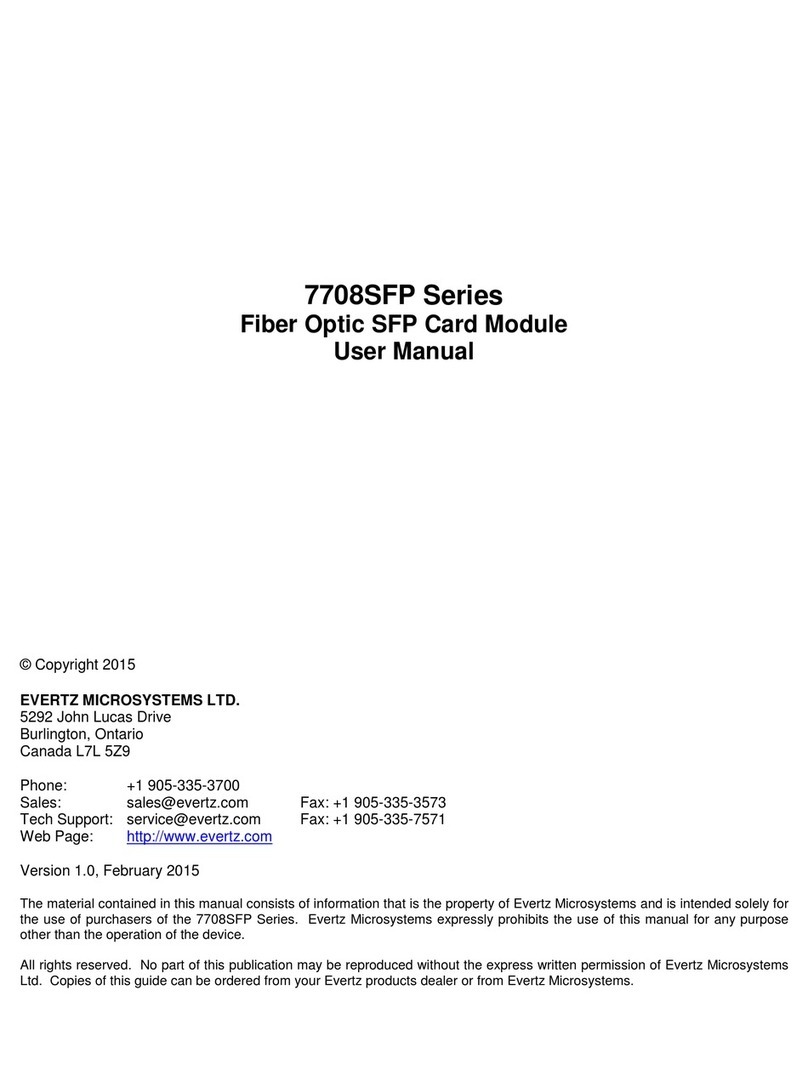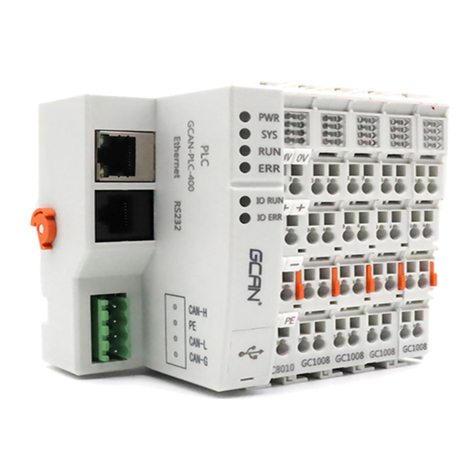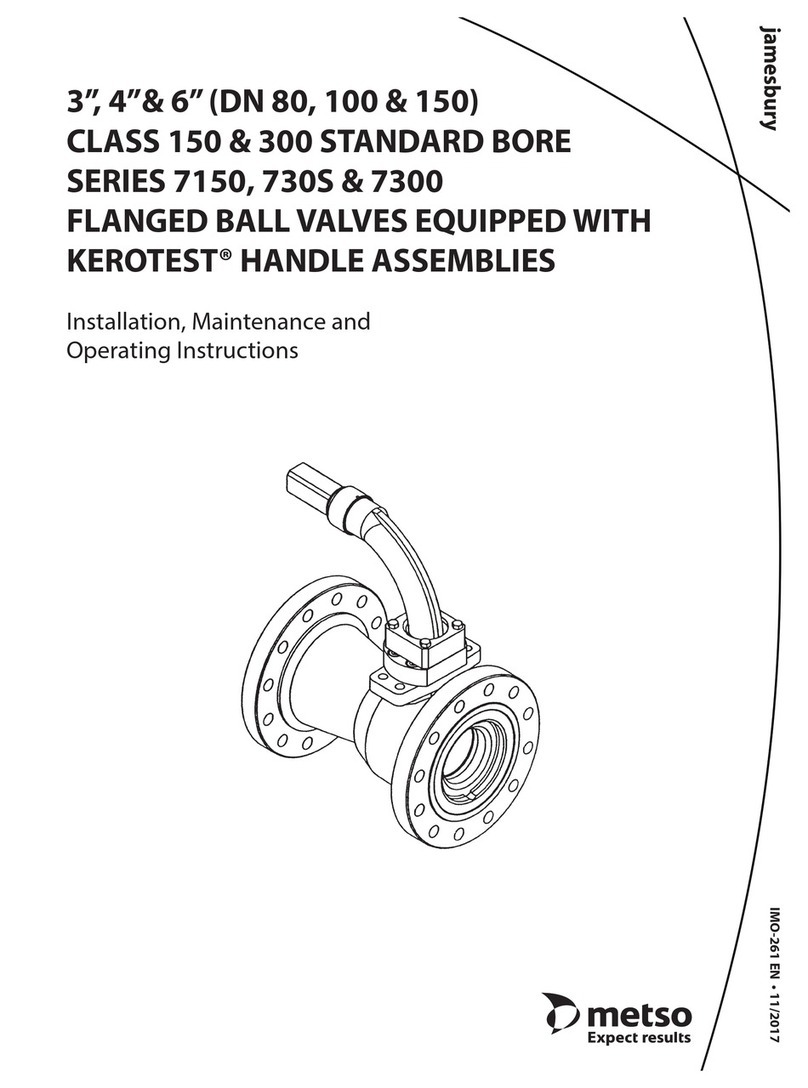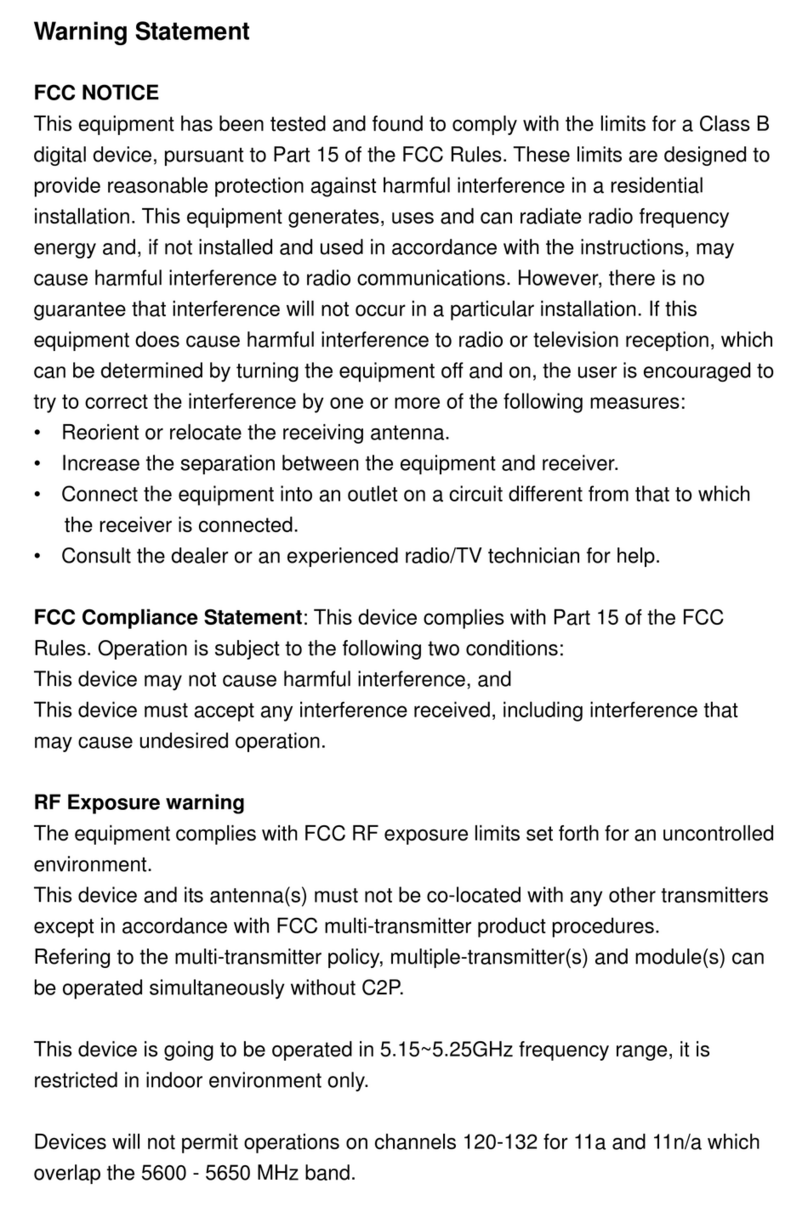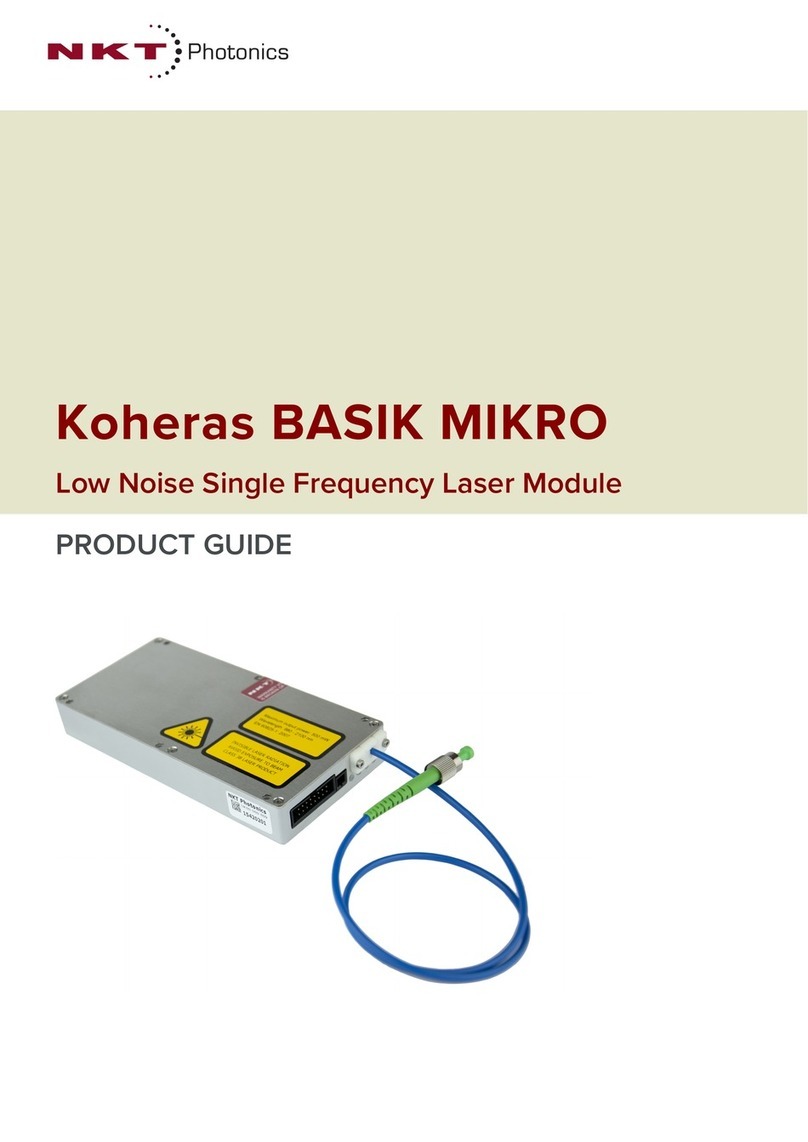BRAHMA DV Series User manual

15491_r01 1/13
DV(M/E) SERIES
COMBINED UNITS
COMBINED UNITS FOR GAS APPLIANCES
WITH ½” CONNECTION EQUIPPED WITH A
DIGITAL IGNITION AND FLAME MONITORING
DEVICE AND A MODULATING ADJUSTMENT
SAFETY SOLENOID VALVE
APPLICATION
The DV(M/E) series microcontroller-based units are suitable to
control atmospheric gas burners with or without fan in the
combustion circuit.
These systems can be provided with non-volatile lockout (i.e.
restart from the safety shutdown condition can only be
accomplished by manually resetting the system) or with volatile
lockout (the unit can be restarted by cutting off and then restoring
the power supply).
The automatic control units of this series are suitable for:
-combi boilers;
-heating boilers;
-steam boilers;
-hot air generators;
-radiant tube heaters;
-fan convector heaters;
-water heaters;
-furnaces;
-monobloc burners.
The combined units of this series incorporate a BRAHMA Digital
Microflat "N" series ignition and flame monitoring device and a
BRAHMA modulating adjustment safety solenoid valve type
VCM0X* xx 230VDC. The versatility of microcontroller-based
technology offers several options regarding the operation
sequence and settable times.
The systems of this series are suitable to be used in gas-fired hot
air generators in accordance with the standards EN 525, EN 1020
and EN 1319.
FEATURES
Table 1 shows the main features of this series. Other important
features are mentioned below:
−EC type examination certificate (CE PIN 0694BP0610) in
accordance with the European Gas Appliance Directive
2009/142/CE;
−in accordance with EN 298:2003-09 (European standard for
automatic gas burner control and flame detection systems);
−microcontroller-based technology allowing accurate and
repeatable setting times;
−two independent safety contacts for driving the gas valve;
−auxiliary output for the control of an auxiliary fan or acting as a
N.O. auxiliary contact (this is not a SELV contact and is
therefore not suitable to control circuits type SELV – Safety
Extra Low Voltage, e.g. 24V –);
−possibility to incorporate a highly efficient, completely solid-
state design ignition device equipped with an EMC filter;
−possibility to mount a (100 ÷470 Kohm) resistor in series to the
lockout signal output to prevent any failures in the unit in case
the connections are reversed by mistake;
−possible connection to a user interface module with diagnostic
and modulation parameter setting functions (BRAHMA module
type 807);
−flame detection by means of an electrode (ionization, exploiting
the flame rectification effect) or through a BRAHMA sensor type
FD(1/2)D;
−possibility to perform multiple re-ignition attempts (see option
Ynn);
−possibility to be connected to live-live power supply systems.

2/13 15491_r01
Table 1 – Main features of DV(M/E) units
Type Reset V
(1)
TS
(2)
EN 298
code
DVM11
Manual
AMCLXN
DVM31
Manual
*
FMCLXN
DVE11
Electrical
AMCVXN
DVE31
Electrical
*
FMCVXN
DTVM11
Manual
*
AMCLXN
DTVM31
Manual
*
*
FMCLXN
DTVE11
Electrical
*
AMCVXN
DTVE31
Electrical
*
*
FMCVXN
(1) Combustion motor fan.
(2) Safety thermostat: failing any specific options, this contact
opening causes recycling followed by lockout.
TECHNICAL DATA
Nominal power supply: 220-240 V @ 50-60 Hz
Power consumption: 30 VA
Operating temperature range: -20 °C ÷+70 °C
Humidity: 95% max at +40 °C
Protection degree: IP00
Internal fuse rating: 4 A fast-blow type
External fuse rating
(recommended): 3.15 A fast-blow type
(3)
Max total weight: 200 g approx.
(3) The external fuse rating should be selected according to the max
applied load. In any case, this value should never exceed the
internal fuse rating.
Times
Waiting/pre-purge time (TW/TP): 0 ÷60 s
Safety time (TS): 3 ÷120 s
Spark ignition time (TSP): (TS-1) s
Response time in case of flame failure: < 1 s
Post-purge times:
- for main combustion motor:
- for auxiliary motor (opt. T1):
0 ÷1800 s
0 ÷500 s
Inter-waiting or inter-purge time (opt. Inn): 1 ÷240 s
Auxiliary contact closing or auxiliary fan
starting delay (opt. Wnn): 1 ÷1800 s
Lockout delay for extraneous light
(opt. Knn):
0 ÷60 s
Lockout due to APS failure to close
(opt. Qnn)
(4)
: 3 ÷120 s
Pre-ignition time (opt. Jnn): 1 ÷60 s
Recycling attempts (opt. Ynn): 1 ÷10
Varnishing: upon request
Max contact rating
Room thermostat: 0.5 A cos ϕ≥0.4
Combustion fan: 0.5 A cos ϕ≥0.4
Ignition transformer
(5)
: 0.5 A cos ϕ≥0.4
Cross flow fan –
auxiliary output: 0.5 A cos ϕ≥0.4
Lockout signal: −Standard
(6)
:
−With opt. R
(6)
:
−With opt. F
(7)
:
50 mA cos ϕ= 1
0.5 mA cos ϕ= 1
1.0 A cos ϕ= 1
User interface: 5 mA
(4)
Air pressure switch
(5)
In the versions with option “PR” and in oil versions only.
(6)
Optotriac-driven load.
(7)
Triac-driven load.
Under-voltage and over-voltage protection
In case the power supply voltage is lower than 165V
AC
or higher
than 290V
AC
approx., the unit will go to safety condition. It will
restart as soon as the voltage is again between 175V
AC
and
280V
AC
approx.
Max cable length for external components
Room thermostat: 20 m
Remote lockout signal – Reset: 20 m
Ignition device (high voltage): 2 m
Any other cable (load power supply cables, air
pressure switch cable and user interface board
connection cable):
1 m
Flame monitoring
The flame detection device exploits the rectification property of the
flame.
An important safety aspect to note is that the control unit is more
flame-sensitive at start-up or during the waiting/pre-purge time
(negative differential switching).
Min ionization current: upon request:
0.5 µA
1.2 µA
Recommended ionization current: 3 ÷ 5 times the
min one
Min insulation resistance of detection
cable and electrode to earth: ≥50 MΩ
Max electrode stray capacitance: ≤1nF
Max short-circuit current: < 200µA AC
Integrated ignition device
Peak voltage
(8)
: upon request:
15 kV
18 kV
Peak current: 800 mA
Spark repetition rate
(9)
: upon request:
25 Hz
1 … 50 Hz
Recommended spark gap: 2 ÷ 4 mm
Power consumption: 2.5 VA
Spark energy: 20 mJ
(8)
Value measured with 30 pF load.
(9)
ATTENTION: the ignition device output is not safe to touch if the
spark repetition rate is higher than 25Hz; in this case the appliance
will have to be provided with further protection.

15491_r01 3/13
Construction
The plastic casing (and the PCB varnishing upon request) protect
the control unit from any damage resulting from impacts,
tampering, dust and contact with the external environment.
The electronic board equipped with surface mount components,
representing the “logic core” of the system, and an innovative
circuit patented by BRAHMA for the generation of the ignition
spark (limiting electromagnetic interference to a minimum) have
enabled to reduce the PCB dimensions; consequently, even the
most complex versions are extremely compact.
A varistor protects the control unit from any voltage peaks which
may arise in the mains supply and due, for example, to
atmospheric discharges such as thunderbolts. An internal
accessible fuse protects the relays of the unit in case of short
circuit on the control outputs (valves, fan and lockout signal).
Connection
The use of non-reversible connectors with a different number of
poles makes connection easy and reliable. One-pin fast-on
connectors of different size for ignition and detection electrodes
enable an easy installation and replacement. The double-output
ignition device allows spark generation on one point (1a), two
points (1b) or between two electrodes insulated from the metal
frame of the burner (1c), as shown in Fig.1; the configuration (1c)
ensures a more reduced emission of electromagnetic interference.
(
1a) (1b) (1c)
Fig. 1 – Ignition transformer connections
!
!!
!
IMPORTANT NOTE
To further reduce irradiated interference and increase the immunity
of the control unit, it is strongly recommended to mount a wire-
wound power resistor with a value between 1kΩand 4.7kΩ
between the high voltage cables and the related spark electrodes.
Strain relieves and a sufficient number of earth and neutral
terminals should be available in the appliance or in external
connection boxes.
The control systems types DTV(M/E) are prearranged for the
connection of a safety thermostat TS (see Fig.2) which stops the
power supply to the EV1 gas valve and causes a safety shutdown
after a delay which is the sum of waiting (or pre-purge) and safety
times. If a self-resetting safety thermostat is used (option available
in the versions with manual reset only), the restoration time of this
thermostat in the appliance will have to be longer than the total
time required for the max allowed number of re-ignition attempts
before reaching lockout.
VG1 S T
J3
J4
15 14 13 19 18 17 16
Fig. 2 – Safety thermostat connection
Standard accessories
The control systems are usually supplied with a kit of female
connectors and/or a reset push-button (see Fig.3). Anyway, do not
couple terminals and female connectors of different type.
RESET PUSH-BUTTON
DRILLING PLANE
NEUTRAL
RESET
LOCKOUT S.
TERMINALS
FEMALE CONNECTORS
CODE 81020980
Fig. 3 – Standard accessories
Installation directions
−Ignition systems are safety devices; the manufacturer’s
responsibility and guarantee are invalidated in case of
Customer's tampering with the product;
−the system is designed to stay in running status for less than
24h (system for non-permanent operation). Reaching this limit
causes a regulation shutdown to enable the unit to check its
own efficiency;
−connect and disconnect the control unit only after switching off
the power supply;
−the unit can be mounted in any position;
−avoid exposure to dripping water;
−a ventilated installation environment and a suitably low
temperature ensure the longest life of the control system;
−before installing or replacing the unit, make sure that the type,
code and times are correct;
−the appliance in which the control system is installed should
provide adequate protection against the risk of electric shock
(at least IP20).

4/13 15491_r01
Electrical installation
−Respect the applicable national and European standards
regarding electrical safety (e.g. EN 60335-1/EN 50165);
−The devices can be equipped with a polarity recognition device.
The non-observance of live-neutral polarity causes non-volatile
lockout at the end of the safety time.
−before starting the system check the cables carefully. A wrong
wiring can damage the unit and compromise the safety of the
appliance.
−make sure that the earth terminal of the control system, the
metal frame of the burner and the earth on the mains supply
are well connected.
−avoid placing the detection cable close to power or ignition
cables;
−use heat resistant detection cables and electrodes, and make
sure that they are well insulated to the ground and protected
from possible moisture or water in general;
−keep the ignition cable as short and straight as possible and
place it far from other conductors to reduce the emission of
electromagnetic interference (max length <2m and insulation
voltage >25kV).
In case of a live-neutral network with unearthed neutral or a live-
live network (with unearthed star centre), the control unit can
operate as well thanks to an inbuilt resistor.
In case of a "partial" short circuit or bad insulation between live and
earth, the voltage on the ionization probe can be reduced until it
causes the lockout of the control unit due to impossibility of
detecting the flame signal.
Checking at start-up
Check the control system before the first start-up, after any
overhaul and after a long period of non-operation. Before any
ignition attempt make sure that the combustion chamber is free
from gas, then check the following:
−if the start-up attempt occurs without gas supply, the control
system should go to lockout at the end of the safety time;
−when stopping the gas flow while the control system is running,
the power supply to the gas valves should be interrupted within
1s, and the control system should proceed to lockout after a
recycling attempt (or more than one up to 10 depending on the
settings);
−operating times and sequence should correspond to those
declared for the type of control unit you are using;
−the level of the flame signal should be high enough (see Fig.4
for the measuring method to adopt);
−the ignition probes should be adjusted in the most stable way
for a spark gap between 2-4 mm;
−the intervention of limiters or safety devices should cause the
lockout or safety shutdown of the control unit according to the
type of application and the procedure provided for.
Microammeter
Fig. 4 – Flame signal measuring method
!
!!
!
IMPORTANT NOTE
The ionization current can be measured in double-electrode control
unit versions only.
In single-electrode versions, inserting a measuring instrument in
series to the detection electrode creates a hazardous situation for
the user.
Operation
The following description refers to control systems with standard
operating cycle.
At every start-up the control system performs a self-checking of its
own efficiency. During the waiting (TW) or pre-purge (TP) time the
internal circuit tests the correct operation of the flame signal
amplifier: extraneous light or a fault in the amplifier leading to flame
simulation prevent the control system from starting.
In the types with fan control, before the pre-purge time (TP) starts,
the air pressure switch contacts are checked to prove their "no-air-
flow" condition. If this test is positive, the air pressure switch
commutation allows the pre-purge time (TP) to begin. The test of
the air pressure switch contacts is repeated at every operating
cycle start-up.
At the end of the waiting (TW) or pre-purge (TP) time the EV1 gas
valve is energized and the ignition device is operated. In this way
the safety time (TS) begins.
If a flame signal is detected at the end of the safety time, the
control unit de-energizes the ignition device and goes to running
condition.
Else, if no flame signal is detected during the safety time, at the
end of the same the control system goes to lockout, the EV1 gas
valve is closed, the ignition device disabled and the lockout signal
energized.
Flame failure during the safety time causes the ignition device to
be activated within one second.
Please see the attached operating cycle diagrams to better
understand the operation of each control unit.
Operating cycle variations
Followings are the available operating cycle variations of the
control units:
−Option 6 (“A”, “B”): ignition mode
The control unit can keep the ignition spark operating for the whole
safety time TS (option “A”) or switch it off immediately as soon as a
flame signal is detected (Option “B”).
−Option 9 (“C3”, “C4”, “C5”): BRAHMA modulating valve type
VCM01 with soft-start function
The soft-start function enables to control the supply current value
to the valve, avoiding its max opening in the following stages:
during ignition (option “C3”); during ignition and the delay time to
reach the second flow rate value (option “C4); during ignition, the
delay time to reach the second flow rate value and in operating
status (option “C5”).
−Option 11 (“X”, “Wnn”): auxiliary fan or auxiliary contact
opening mode
The unit can enable this output at the end of the safety time
(options “X”) or with a delay (expressed in seconds) settable upon
request (option “Wnn”).
−Option 12 (“K”, “Knn”): lockout due to extraneous light
If extraneous light is detected at start-up or during the safety/pre-
purge time, the control unit will proceed to lockout immediately
(option “K”) or with a delay (expressed in seconds) settable upon
request (option “Knn”).

15491_r01 5/13
−Option 13 (“Qnn”): insufficient or no air flow at start-up
If insufficient or no air flow is detected at start-up or during the
waiting/pre-purge time, the control unit will go to lockout within
3÷120 seconds (the time is settable upon request).
−Option 14 (“S”, “Snn”): insufficient or no air flow in running
status
In case of flame failure in running status, the control unit proceeds
to lockout immediately (option “S”) or after an “nn” number of
events (option “Snn”).
−Option 15 ( “V”, “Vnn”): flame failure in running status
In case of flame failure in running status, the control unit proceeds
to lockout immediately (option “V”) or after an “nn” number of
events (option “Vnn”).
−Option 17 (“Pnn”, “PTnn”): post-purge time on the main
combustion motor fan
A post-purge action on the main combustion motor fan is carried
out (the time is settable upon request).
With option “Pnn”, post-purge is carried out regardless of the
heating demand status; with option “PTnn”, post-purge can be
interrupted by restoring the heating demand and having a new
ignition cycle start.
−Option 18 (“Onn”): post-purge time on the auxiliary motor
A 1 to 500s post-purge action on the auxiliary fan is carried out (the
time is settable upon request). This option can be implemented in
the versions provided with auxiliary fan control only (option “T1”).
−Option 19 (“Ynn”): recycling attempts
The control unit performs multiple recycling attempts after lockout
(the number of attempts is settable upon request).
−Option 20 (“Dnn”): recycling attempts after an ignition failure or
a flame signal failure in running status
The control unit carries out an “nn” number of recycling attempts
after an ignition failure at the end of the safety time or after a flame
failure in running status.
−Option 21 (“Inn”): inter-waiting or inter-purge time
A waiting or pre-purge time (expressed in seconds) is performed
after a failed ignition attempt and before the next recycling attempt.
−Option 23 (“G”): Air pressure switch or pre-heater thermostat
checking
The control unit starts the ignition cycle without checking the air
pressure switch.
−Option 24 (“Jnn”): pre-ignition time
The transformer is switched on at the end of the waiting/pre-purge
time and before the beginning of the safety time (the time is
settable upon request).
Resetting the control unit
Non-volatile lockout (manual reset)
When the control unit goes to non-volatile lockout, to reset the
system press the reset push-button till the lockout signal switches
off.
Volatile lockout (electrical reset)
In case of volatile lockout, the unit can be reset by cutting off and
then restoring the power supply. It is not possible to reset the
system by switching off the heating demand device.
Communication interface
In case option “U” is requested, the ignition and flame monitoring
device can send and receive data according to a low-speed
communication protocol developed by BRAHMA.
The main function of this communication protocol is diagnosing
the status of the control unit and setting the modulation parameters
of the VCM0X modulating valve.
The following figure shows the wiring diagram for the connection of
the control unit to a BRAHMA interface module.
Fig. 5 – Communication connector of the DV(M/E) unit
NOTES ABOUT PRODUCT DISPOSAL
The device contains electronic components and cannot therefore
be disposed of as normal household waste. For the disposal
procedure, please refer to the local rules in force for special waste.
Low-profile connector
for the wiring of a user
interface
+5V
GND (N)
Output
Input

6/13 15491_r01
PART REFERENCES
Type
Options
D (1) V(2) (3) (4) (5) (6) (7) (8) (9) (10) (11) (12) (13) (14) (15) (16) (17) (18) (19) (20) (21) (22) (23) (24) (25) (26)
Type description
(1)
Safety thermostat
(TS)
No letter: safety thermostat not available. Standard mode
T: safety thermostat available
(2)
Type of lockout
M: non-volatile lockout
E: volatile lockout
(3)
Combustion motor fan
1: not available
3: available
(4)
Type of modulation
1: ON-OFF
2: modulating with two different power values (ignition power and operation power)
Note: shifting from ignition power to operation power occurs when a flame signal is detected. Upon request, the shifting can also occur at the
end of the safety time or after a predefined delay from the end of the safety time.
(5)
Ignition transformer
No letter: integrated ignition transformer. Standard mode
PR: remote electronic ignition transformer
Options description
(6)
Ignition mode
No letter: the ignition spark operates for the whole TSP (TS-1) time. Standard mode
A: the ignition spark operates for the whole TS time
B: the ignition spark switches off as soon as a flame signal is detected
Note: with options “A” or “B” the control unit cannot be used in single-electrode configuration
(7)
Ignition voltage of the integrated ignition device
No letter: 15 kV. Standard mode
H: 18 kV
(8)
Spark repetition rate of the integrated ignition device
No number: 25 Hz. Standard mode
nn: see "Integrated ignition device" section in TECHNICAL DATA paragraph
(9)
Type of control on EV1 valve
No letter: BRAHMA valve type VCM0X without control
C3: BRAHMA valve type VCM0X with soft-start control during ignition
C4: BRAHMA valve type VCM0X with soft-start control during ignition and during the delay time to reach the
second flow rate value
C5: BRAHMA valve type VCM0X with soft-start control during ignition, during the delay time to reach the second
flow rate value and in operating status
Note:
the soft-start function enables to check the modulation current value in order to keep it within a given range. This checking enables to
detect any circuit failures. If the modulation current value is not within a predetermined range, the unit will perform a safety shutdown.
(10)
Type of application for EV1 modulating valve
No letter: not available. Standard mode
M1: valve used in intermittent-first-stage applications (see TECHNICAL DATA and OPERATING CYCLES
paragraphs)
M2: valve used in slow-opening applications (see TECHNICAL DATA and OPERATING CYCLES paragraphs)
(11)
Auxiliary fan or auxiliary contact opening with flame signal on
No letter: no delay. Standard mode
X: at the end of the safety time TS
Wnn: with delay settable upon request (see TECHNICAL DATA paragraph)
(12)
Lockout due to extraneous light
No letter: not available (the unit remains in permanent waiting/pre-purge status). Standard mode
K: immediate lockout
Knn: lockout with delay settable upon request (see “TECHNICAL DATA” paragraph)
(13)
Insufficient or no air flow at start
-
up
No letter: the unit remains in stand-by status. Standard mode
Qnn: lockout with delay settable upon request (see “TECHNICAL DATA” paragraph)
(14)
Insufficient or no air flow in running status
No letter: safety shutdown followed by stand-by. Standard mode
S: immediate lockout
Snn: the unit goes to lockout after "nn" air pressure switch/pre-heater thermostat signal failures in running status
(15)
Flame failure in running status
No letter: recycling. Standard mode
V: immediate lockout
Vnn: the unit goes to lockout after "nn" flame signal failures in running status (see “TECHNICAL DATA” paragraph)

15491_r01 7 /13
Options description
(16)
Power supply connection
No letter: polarized live-neutral (phase-sensitive device). Standard mode
N: non-polarized device
(17)
Post
-
purge of the main motor fan
No letter: no post-purge. Standard mode
Pnn: the post-purge is settable upon request (see “TECHNICAL DATA” paragraph) and cannot be interrupted in
case of heating demand restoration
PTnn: the post-purge is settable upon request (see “TECHNICAL DATA” paragraph) and can be interrupted in case
of heating demand restoration
(18)
Post
-
purge of the auxiliary motor (with option “T1” only)
No letter: no post-purge. Standard mode
Onn: the post-purge is settable upon request (see “TECHNICAL DATA” paragraph) and cannot be interrupted in
case of heating demand restoration
(19)
Recycling attempts after an ignition failure
No letter: one recycling attempt after a safety shutdown. Standard mode
Ynn: multiple recycling attempts upon request (see “TECHNICAL DATA” paragraph)
(20)
Recycling attempts after an ignition failure or a flame signal failure in running status
No letter: number of recycling attempts after an ignition failure and number of recycling attempts after a flame signal
failure independent from each other. Standard mode
Dnn: number of recycling attempts after an ignition failure and number of recycling attempts after a flame signal
failure dependent from each other.
(21)
Inter
-
waiting or inter
-
purge time
No letter: no inter-waiting or inter-purge time. Standard mode
Inn: inter-waiting or inter-purge time settable upon request (see “TECHNICAL DATA” paragraph)
(22)
Lockout signal output
No letter: high voltage output without any protection against incorrect wiring of the reset push-button. Standard mode
R: internal resistor for the protection of the reset push-button against reversed connection
F: output for controlling lockout signals with power consumption over 50 mA
(23)
Air pressure switch checking
No letter: air pressure switch or pre-heater thermostat checking. Standard mode
G: no air pressure switch or pre-heater thermostat checking
Note:
option “G” is available for the control units designed for special applications where checking the air flow is not required by the reference
standard.
(24)
Pre
-
ignition
No letter: no pre-ignition. Standard mode
Jnn: pre-ignition settable upon request (see “TECHNICAL DATA” paragraph)
Note: option “J” is available in double-electrode versions only (separated ignition and flame detection electrodes).
(25)
User interface
No letter: no user interface. Standard mode
Un * BRAHMA user interface module available
(see “TECHNICAL DATA” paragraph)
* Note:
the letter “n” indicates the user interface reference number representing a specific function. For further details, please refer to our
data sheets about user interface modules for DMN series burner control units.
(26)
Auxiliary output
No letter: no auxiliary output. Standard mode
T1: combustion motor fan auxiliary output
T2: N.O. auxiliary contact (this is not a SELV contact and is therefore not suitable to control circuits type SELV -
Safety Extra Low Voltage, e.g. 24V -)

8/13 15491_r01
WIRING DIAGRAMS
The following wiring diagrams refer to the most complete device versions and show which parts are available or different according to
the options requested.
FUSE MAIN SWITCH ROOM
THERMOSTAT SAFETY
THERMOSTAT AIR PRESSURE
SWITCH REMOTE RESET
(note 1) LOCKOUT SIGNAL
FAN VCM01 VALVE
Note 1: not available in case of volatile lockout (option E)
Type DVM11 – DVE11 - DVM12 – DVE12
Type DVM11PR – DVE11PR - DVM12PR – DVE12PR
Type DVM31 – DVE31 - DVM32 – DVE32
Type DVM31PR – DVE31PR - DVM32PR – DVE32PR

15491_r01 9 /13
Type DTVM11 – DTVE11 - DTVM12 – DTVE12
Type DTVM11PR – DTVE11PR - DTVM12PR – DTVE12PR
Type DTVM31 – DTVE31 - DTVM32 – DTVE32
Type DTVM31PR – DTVE31PR - DTVM32PR – DTVE32PR
No
tes:
(1) available in case of option "Un" only
(2) in case of option T1 or T2, the wiring diagram will be as
follows:
J4
19 18 17 16
VT
J4
19 18 17 16
C
Option T1 Option T2
Wiring diagram modifications in case any options are
requested
(1)
(2)

10/13 15491_r01
STANDARD VERSIONS WITHOUT SAFETY THERMOSTAT
TW
TS
TW
TS
DVM11 - DVE11 – DVM11PR – DVE11PR
1s
1s
TSP
TSP
DVM31 – DVE31 – DVM31PR – DVE31PR
TP
TS
TP
TS
1s
1s
TSP
TSP
STANDARD VERSIONS WITH SAFETY THERMOSTAT
TW
TS
TW
TS
DTVM11 - DTVE11 – DTVM11PR – DTVE11PR
1s
1s
TSP
TSP
TP
TS
TP
TS
DTVM31 – DTVE31 – DTVM31PR – DTVE31PR
1s
1s
TSP
TSP
OPERATING CYCLES
THERMOSTAT FAN AIR PRESSURE IGNITION FLAME LOCKOUT VALVE AUXILIARY SAFETY
SWITCH DEVICE SIGNAL SIGNAL FIRST STAGE OUTPUT THERMOSTAT
EV1
VT C
TW
TS
TW
TS
DTVM12 - DTVE12 – DTVM12PR – DTVE12PR
1s
1s
TSP
TSP
TP
TS
TP
TS
DTVM32 – DTVE32 – DTVM32PR – DTVE32PR
1s
1s
TSP
TSP
TW
TS
TW
TS
DVM12 - DVE12 – DVM12PR – DVE12PR
1s
1s
TSP
TSP
DVM32 – DVE32 – DVM32PR – DVE32PR
TP
TS
TP
TS
1s
1s
TSP
TSP
Operation power
Ignition power
Operation power
Ignition power
Operation power
Ignition power
Operation power
Ignition power

15491_r01 11 /13
AVAILABLE OPTIONS
NOTES
1. Lockout status with delay.
2. Inter-waiting or inter-purge time available.
As special setting, the waiting/pre-purge time between different recycling attempts can be replaced by one waiting/pre-purge
time if this operation sequence is allowed in the final appliance.
3. Pre-ignition time available.
4. Auxiliary output ignition delay available.
TW/TP
TS
TW/TP
TS
OPTION Y and I
1s
1s
NOTE 2
FIRST CYCLE 1 TO 10 AVAILABLE RECYCLING ATTEMPTS
TSP
TSP
OPTION W
NOTA 4
TW/TP
TS
1s
TSP
VT C
OPTION B
TW/TP
TS
1s
TS
OPTION A
TW/TP
TS
TS
OPTION X
TW/TP
TS
1s
TSP
VT C
OPTION J
NOTE 3
TW/TP
TS
1s
TSP
OPTION V
TW/TP
TS
1s
TSP
OPTION S
TP
TS
1s
TSP
TP
OPTION K and Knn
Tdk
NOTE 2
EV1
EV2
NOTA 1
OPTION Q
–
Insufficient or
no air flow
NOTA 1
OPTION Q
–
Air pressure switch
restoration failure
THERMOSTAT FAN AIR PRESSURE IGNITION
FLAME LOCKOUT VALVE AUXILIARY SAFETY
SWITCH DEVICE SIGNAL SIGNAL FI
RST STAGE OUTPUT THERMOSTAT
EV1
VT C

12/13 15491_r01
TW
TS
TW
TS
1s
1s
TSP
TSP
OPTION P (NOTE 1)
1s
TSP
TP
TS
TPost
NOTES
1. The same behaviour occurs for the auxiliary cross flow fan in case of option “Onn”.
2. The time required to shift from the first to the second modulation stage is settable upon request.
TP
TS
TP
TS
1s
1s
TSP
TSP
TP
TS
TP
TS
1s
1s
TSP
TSP
TSP
AVAILABLE OPTIONS
OPTION M1
NOTE 2 -- 2nd stage
-- 1st stage
-- 2nd stage
-- 1st stage
TP
OPTION PT
1s
TSP
TP
TS
TPost
TP
OPTION M2
OPTION G
THERMOSTAT FAN AIR PRESSURE IGNITION
FLAME LOCKOUT VALVE AUXILIARY SAFETY
SWITCH DEVICE SIGNAL SIGNAL F
IRST STAGE OUTPUT THERMOSTAT
EV1
VT C

15491_r01 13 /13
OVERALL DIMENSIONS
The overall dimensions of the device are shown below.
24
12
18
30
24
12
69.75 ± 1
6 holes for self- apping
screws ø 4
( ype DIN 7500)
Fixing pla e ø 45
82 ± 1
95.5 ± 1
UNI ISO 228/1
G ½”
120 ± 1
14 ± 1
83.5 ± 1
23.2 ± 1
UNI ISO 228/1
G ½”
41 ± 1
Pressure es poin
Pressure es poin
134 ± 1
108 ± 1
98.5 ± 1
ATTENTION -> Company Brahma S.p.A. takes no responsibility for any damage resulting from Customer's tampering with the device.
BRAHMA S.p.A.
Via del Pontiere, 31
37045 Legnago (VR) - ITALY
Tel. +39 0442 635211 - Fax +39 0442 25683 2012/06/15 Subject to amendments without notice
http://www.brahma.it
E-mail: brahma@brahma.it
This manual suits for next models
10
Table of contents
Other BRAHMA Control Unit manuals
Popular Control Unit manuals by other brands

Inficon
Inficon BM1000 Series operating instructions
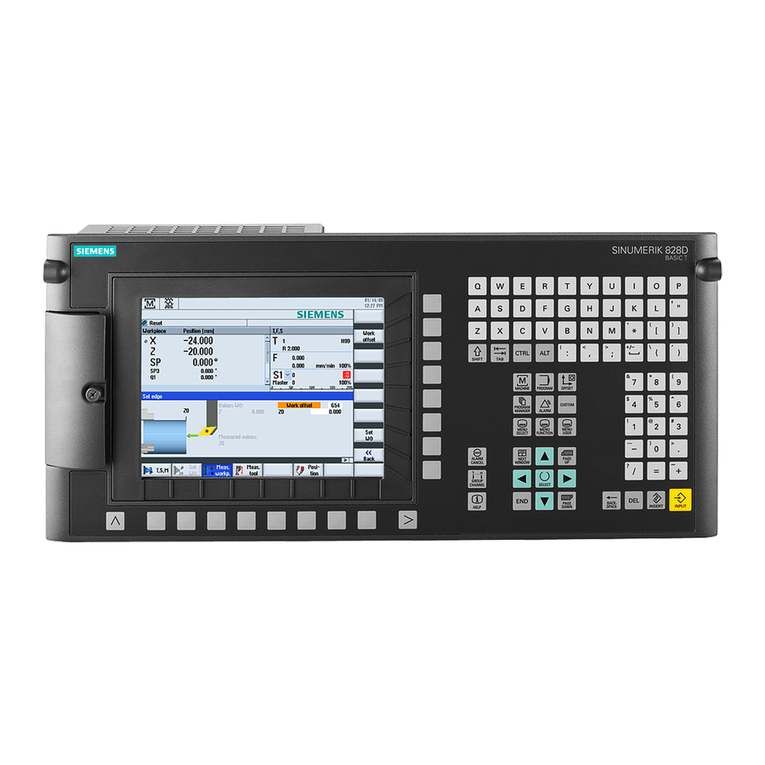
Siemens
Siemens SINUMERIK 828D Turning manual
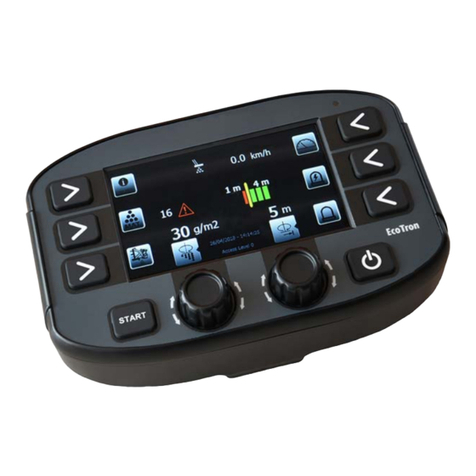
Rauch
Rauch EcoTron Operator's manual
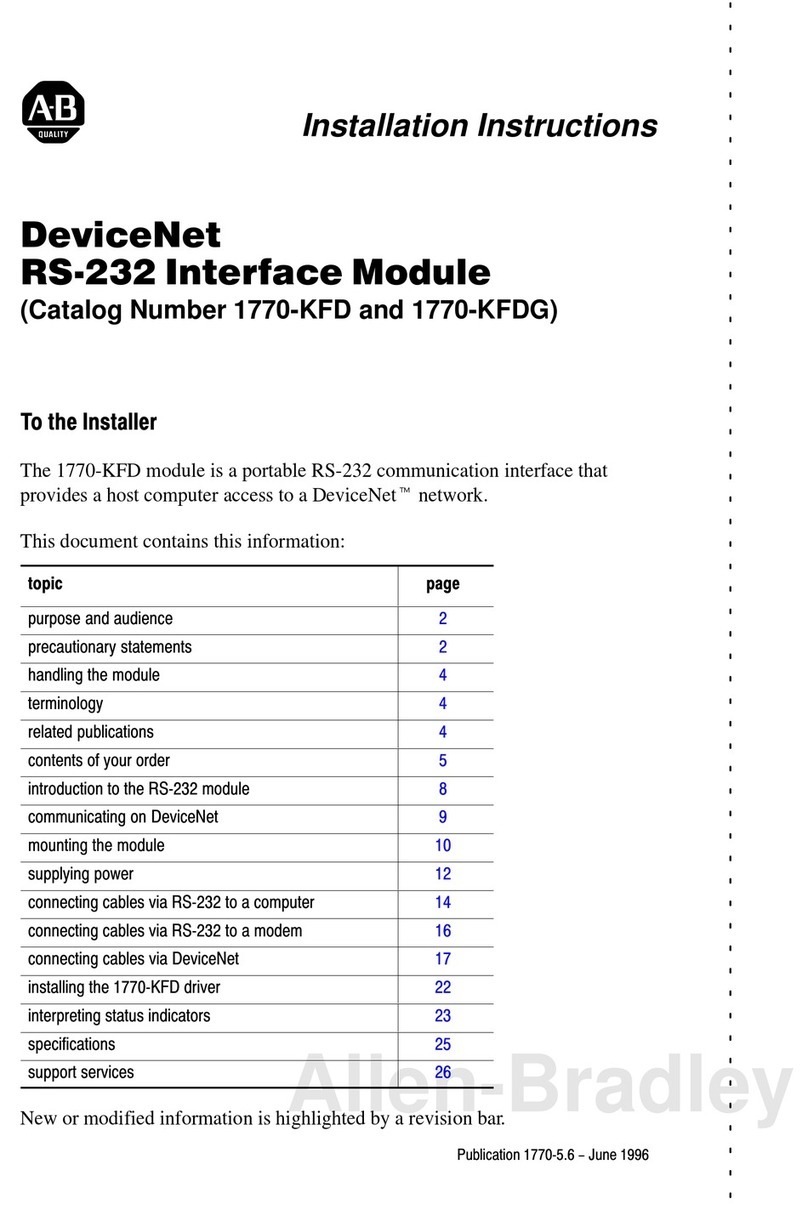
Allen-Bradley
Allen-Bradley 1770-KFDG installation instructions
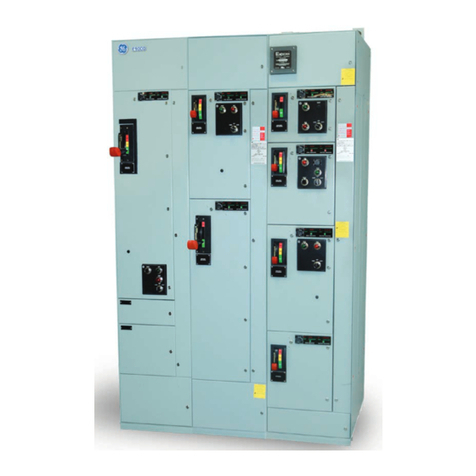
GE
GE Evolution Series E9000 Installation, operation and maintenance manual

AVK
AVK 41 Series FIELD MAINTENANCE AND INSTRUCTION MANUAL
